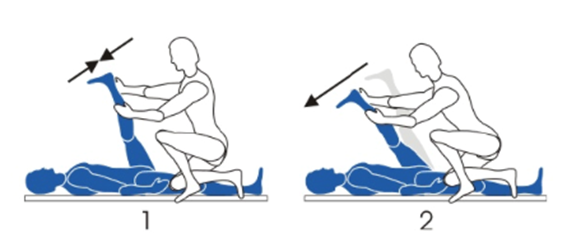Flexibility is defined as the maximum range of motion of a joint or group of joints. Knowing how to work flexibility correctly is the question of many physical activity practitioners.
It is not new that working on this physical capacity is of fundamental importance for physical performance and to avoid pain and injury.
In this post you will know how to work flexibility.
How to work flexibly
Methods of developing flexibility
Static method
Dynamic method
M method of neuroproprioceptive facilitation
Flexibility and body warming
Completing
How to work flexibly
Methods of developing flexibility
There are 3 basic methods of developing flexibility , they are: static, dynamic and neuroproprioceptive (FNP) facilitation.
Static method
The static method is nothing more than staying in position when reaching the maximum limit. To reach this limit, the ideal is to increase the range of motion in a continuous, smooth and gradual way.

When you reach that maximum point, you must remain in the position for a certain time (which can vary from just 5 seconds to up to 90), which will depend on the training protocol that was developed.
The goal should be to reach the maximum limit for that joint (s), until you feel a slight discomfort in the target musculature to be stretched.
Dynamic method
The dynamic method consists of making progressive and smooth movements. In an oscillatory way, using repetitive movements, with the purpose of obtaining, at each insistence, greater amplitude.
These repetitive movements can be performed for a period of time from 20 to 60 seconds.
M method of neuroproprioceptive facilitation
The neuroproprioceptive facilitation method needs an assistant for some of the exercises to be performed (in some cases, it is possible to use materials such as a towel or belt).
This method is based on using neuroproprioceptive stimuli to achieve a level of flexibility beyond the person’s normal standards.
To explain, I will give the following example: the individual lies on the floor and raises an extended leg. The assistant holds that leg and asks the individual to apply force, as if trying to lower that leg.
However, the auxiliary’s hand prevents the leg from lowering, causing resistance. To try to lower that leg, the individual is pushing with the muscles in the back of the leg.
Then, quickly, the assistant asks the individual to relax his leg and passively pushes his leg in the opposite direction, causing the muscles that were then applying force to be stretched. The figure below illustrates this explanation:

Through the action of structures located in our muscles and tendons, stimuli occur that allow these muscles in the back of the leg to be more elongated than in their natural condition.
Thus, allowing a greater level of flexibility to be achieved for the joints involved, in this case, the knee and the hip.
Working f flexibility and body warming
For some people, it can be interesting and more comfortable to work on flexibility after a brief body warm-up.
This can be done from an aerobic activity of light intensity, to a warm / hot bath.
The fact that the musculature is more heated, may allow greater relaxation and, with that, reach greater amplitudes.
To learn more about flexibility, see also this post Why we should train flexibility.
Completing
The 3 methods, static, dynamic and neuroproprioceptive (FNP) facilitation, are efficient to work with flexibility.
However, regardless of the method of how flexibility is used, the ideal is to have the recommendation of a Physical Education professional.
Thus, it is possible that the prescription is individualized for the desired objective.
